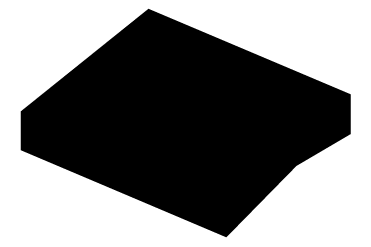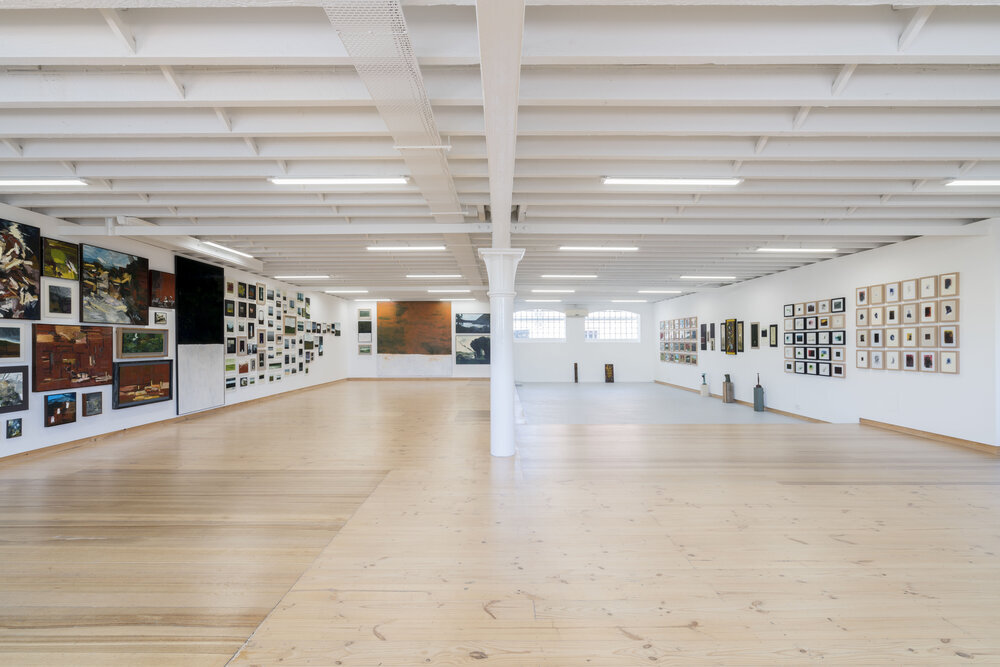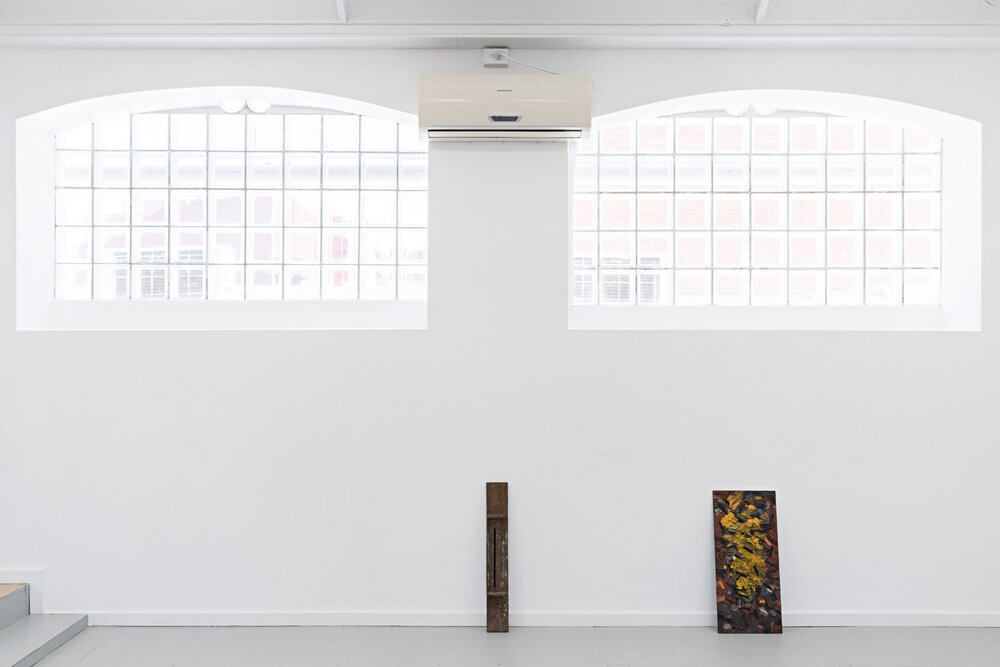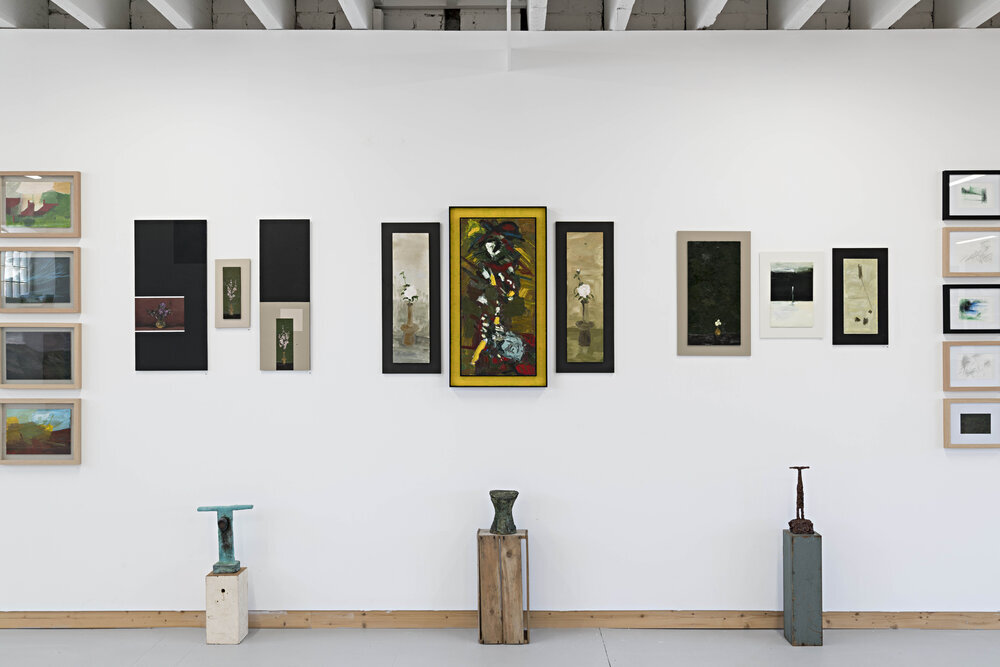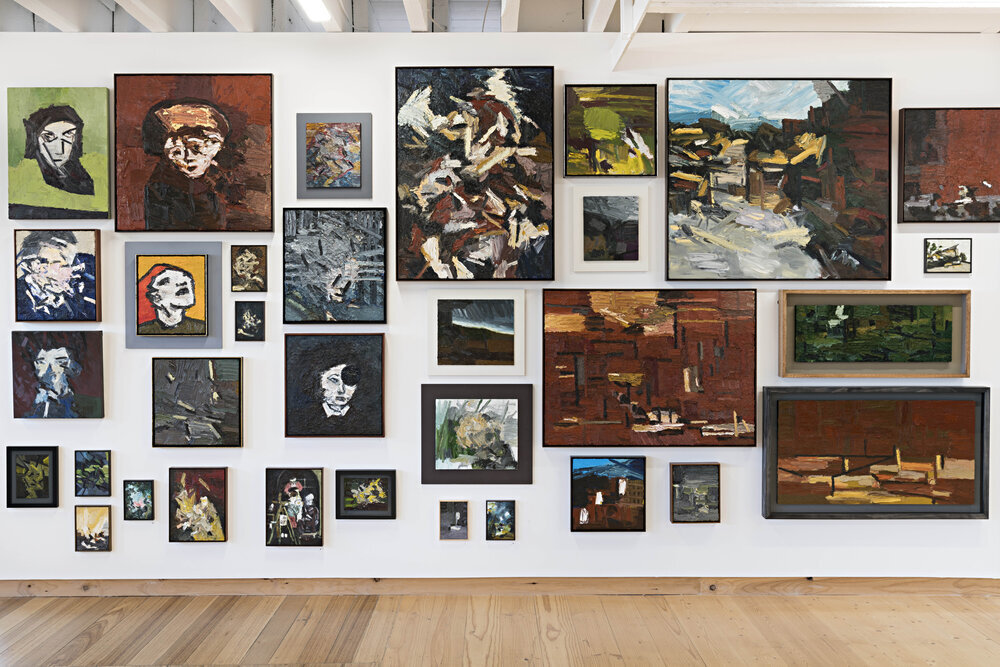JAMES CLAYDEN: PAINTINGS - DRAWINGS - GROUPINGS
10.03.20 - 11.04.2020
Complex Translation by Adrian Martin
Art, a wise person once said, is a matter of the “complex translation of the seen and the felt to a series of visual marks on a flat surface”. That’s a mystery you can contemplate forever. For such translation has nothing to do with verisimilitude, copying, faithful reproduction. Things change, transform along the line between the seeing & feeling, and those marks laid upon the flat, layered surface.
The original impetus – that landscape, object, face, moment, flicker or flare – can be lost altogether, beyond recognition in its eventual rendering. That doesn’t matter, in the end. It is what arises, what we – both artist and spectator arrive at, which counts.
James Clayden can sometimes seem like an abstract painter. But I never, personally, find his work (whatever media he uses) to be entirely abstract. There is always the trace – sometimes evident, at other times faint – of what, in the world, inspired him to begin his complex translation.
We sometimes see a line, a shape, a nose, a post, a fence railing. Maybe that’s what they are, maybe not. The nomination doesn’t matter. What matters are the visual marks, the marking, the intensity and process of that.
Edward Colless writes: “It is something else – that com- motion of vague and fleeting sensations … I loiter among vagrant, half-formed perceptions, bewitched”.
It seems to me that James begins from something at once very concrete (a sight, a sense-impression), and some- thing cloudier: a feeling, an association, some obscure reminiscence that has been sparked within him. It is all those things at once that he seeks to translate. Not to disentangle them, necessarily, but certainly to convey them to the canvas, page or screen. Maybe he himself is not always completely sure what this process is all about. But it drives him.
Sometimes, I feel, with a sharp pang, that I grasp some- thing very specific in his pictures. Maybe a person I know (who we both know), a film scene that I too have seen, a precise location where I have stood and viewed something from that very same angle. There are place names indicated in the titles: Hampstead Heath, Primrose Hill. Have I ever been there, or are these pictures just making me imagine it was so?
I never attempt to verify any of this with James, because I may be entirely dreaming it. But what’s important is that his art can incite this game of fleeting projection and recognition.
The fleetingness is what matters. The dissolution and rebirth of the trace. The loss of a stable, consensus referent; but also the finding of a personal point. Just for a moment, before it vanishes again. The complex translation that takes the artist down one path, and the spectator along another, around the same work.
There is truly a hallucinatory aspect to immersing your- self in James’ work; that’s certainly my experience of it, at any rate. Dark patches, shadow, pools of night. Outlines are blurred, and are plunged into amorphous masses. The tops of trees shimmer and dissolve into each other. Square objects – they could be anything – rise out of the ground, but also disappear into it. Faces are creased, folded, their features unaligned.
The eternal mystery of the horizon: is it a thing, existing in itself, or just the interval between other things, land and sky, earth and clouds? The horizon is the line that is not a line; yet what work it can do inside an image.
The hallucination can be three-dimensional, 3D. Layers and smudges on that surface. “The skin of another”– where skin is translated by folds and swathes of coloured paint. Depths emerge but then find themselves, once again, brutally flattened, cancelled. James is always fighting with the flatness, resigning himself to it, then making it “pop”, somehow, in and for our eye.
The incessant movement in his film and video work is never far away from his paintings, drawings, and other as- semblages. Yet his films and videos, too, wage war, stage a dance, between the flatness & stasis of abstraction and the fullness of actors in space – a space of theatre, of mise en scène, another medium in which he works and plays.
James is often involved with the telling of stories in his work. But the stories are cryptic. Suggested, elusive, allusive. Memories crossed out, but still visible, struggling to be seen and heard. Ghost paintings. A vertigo of the visible; an inaudible, murmuring soundtrack.
I experience a kind of synaesthesia from James’ art. While I stare, I am hearing the sway and rustle of those trees; and also the scratch and bustle of his own painting- drawing tools. Things are returning to me – even if they are not the same things that James himself began from. Voices speak, whispering poetic fragments in my head.
Ruins of texts, of the sensations and feelings they gave me, once upon a time. Shakespeare, Cassavetes, Sondheim: I know they are all, somewhere, in James’ neural memory banks, and sometimes also in mine. But convergence and divergence are the same, ultimately, in this game. He can start from a mountain and end at a movie; I can go in the opposite direction. The translation shuttle is two-way, and eternal.
Art, the reception of art, is the crowded, suddenly fro- zen, eternal moment in the middle, in medias res. We are caught between things and feelings, objects and their metaphors, memories and their stories. Stranded between the host language and a newer language to come. A series of visual marks on a flat surface returns us to the seen and felt not the original thing seen and felt, but something else, something that is coming into being.
Something stirring in the darkness and in the light; something flitting between the lines and the outlines. The marks made on our bodies, and our hearts.
James Clayden’s art, in all its forms and manifestations, is the art of infinite suggestiveness.
Adrian Martin is an associate professor at Monash University, and a film and arts critic.
